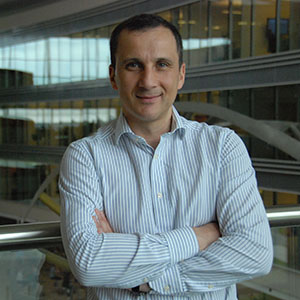What vaccines have achieved
We’ve seen that vaccines can help make a better life possible for everyone.
Key facts about impact to date
4-5m
It is estimated that vaccines currently prevent 4-5 million deaths per year [1].
30+
To date, there are vaccines to prevent over 30 diseases.
10x
Vaccines may save health care systems 10 times more than they cost [2].
The impact is clear to see
Vaccines help save millions of lives every year around the world [1]. They are one of the best tools in the fight against infectious diseases. Vaccines can lower the burden of care on families and healthcare systems, reduce disruption to our lives and livelihoods, lower health inequities and contribute to broader wellbeing and prosperity.
Saving the lives of millions of children
Childhood vaccination programmes have had a huge impact on global health for children and their families. Before childhood vaccines, infectious diseases were the leading cause of child death globally [3].
65%
Between 1990 and 2017, the number of child deaths caused by vaccine-preventable diseases decreased by 65% [4].
Dennis
Malaria Vaccines Programme
Malaria
Dennis explains how the new malaria vaccine could help save the lives of more than 500,000 African children under the age of 5 who die from malaria every year.
Read Dennis's storyHelping to prevent cervical cancer
Vaccines to protect against HPV (Human papillomavirus) can help to prevent cervical cancer, the 4th most common cancer in women worldwide [5]. Vaccines give us hope that cervical cancer could be eliminated within our lifetimes [6].
90%
HPV vaccines can help protect against up to 90% of cervical cancer cases [7].
Weerawat
Vaccine Government Affairs, Emerging Markets
HPV
After losing his mum to cervical cancer, Weerawat explains why he’s proud to play his part in improving access to vaccines that help prevent HPV-related cancers.
Read Weerawat's storyProtecting older adults from serious illness
Vaccines aren't just for children and young people. As our global population ages, vaccines can play a critical role in protecting older adults from severe illness, helping them to live healthier lives and reducing the burden on our healthcare systems. 80% of vaccines in development are for adults of all ages [10].
2.1bn
By 2050, the world’s population of people aged 60 years and older will double to 2.1 billion [8].
Santosh
Vaccines Medical Affairs, India
Pneumococcal
Santosh explains how the pneumococcal vaccine can help to protect older adults from severe infections such as pneumonia, meningitis and sepsis.
Read Santosh's storySlowing the impact of AMR
When people undergo treatments like chemotherapy, caesarian sections or common surgeries like hip replacements, they can be more vulnerable to infections. Vaccines can help to protect them from harmful bacteria - including drug-resistant strains.
1.2m
In 2019, more than 1.2 million people died from infections caused by antibiotic-resistant bacteria [9].
Sanjay
Vaccines Research & Development
AMR
A cancer survivor himself, Sanjay explains how vaccines can help to protect those who are at a higher risk of infection while undergoing treatments like chemotherapy.
Read Sanjay's storyHelping to end the COVID-19 pandemic
New vaccines that protect against COVID-19 play a key role in lowering the spread of the virus while also preventing deaths and hospitalizations. Global partnerships and innovation built on decades of research helped develop and distribute safe and effective COVID-19 vaccines around the globe in record time, without cutting any corners on safety or how well they work.
11bn doses
The global biopharmaceutical industry produced 11 billion COVID-19 vaccine doses in just one year.
Cris
Vaccine Corporate Affairs
COVID-19
Cris explains what the COVID-19 vaccines have meant to her family, and what they can teach us about the value of vaccination for all ages.
Read Cris's storyRene
Vaccines Innovation & COVID-19 Communications
COVID-19
Rene explains what we’ve learned from the largest vaccine effort in history, and how the biopharmaceutical industry is continuing to innovate and prepare for future pandemics.
Read Rene's storyReferences and further links
- Facts in pictures: Immunization (WHO 2019)
- A life-course approach to vaccination (Health Policy Partnership on behalf of MSD 2018)
- Seven Key Reasons: Why immunization must remain a priority in the WHO European Region (WHO Europe 2010)
- Vaccination (Our World in Data 2019)
- HPV – facts about the virus, the vaccine and what this means for you (WHO Europe 2017)
- A cervical cancer-free future (WHO 2020)
- “The power of science”: HPV vaccine proven to dramatically reduce cervical cancer (Cancer Research UK 2021)
- Fact sheets: Ageing and health (WHO 2021)
- Global burden of bacterial antimicrobial resistance in 2019: a systematic analysis (The Lancet 2022)
- Vaccines Europe Pipeline Report (Vaccines Europe 2022)
What the future holds
The biopharmaceutical industry continues to develop new and improved vaccines to help prevent disease and bring the benefits of vaccination to everyone. Vaccine innovation gives us hope that we can overcome major threats to human health globally and help save even more lives in the future.





